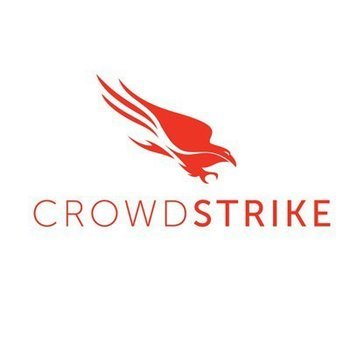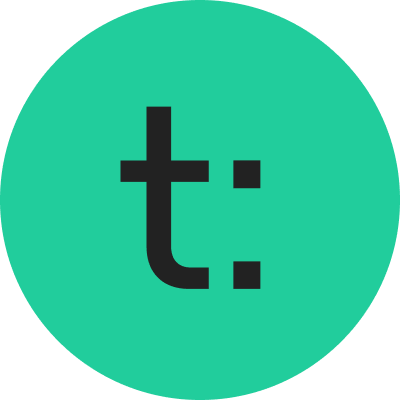CrowdStrike and Teachable integration
Save yourself the work of writing custom integrations for CrowdStrike and Teachable and use n8n instead. Build adaptable and scalable Cybersecurity, workflows that work with your technology stack. All within a building experience you will love.


How to connect CrowdStrike and Teachable
Create a new workflow and add the first step
In n8n, click the "Add workflow" button in the Workflows tab to create a new workflow. Add the starting point – a trigger on when your workflow should run: an app event, a schedule, a webhook call, another workflow, an AI chat, or a manual trigger. Sometimes, the HTTP Request node might already serve as your starting point.
Build your own CrowdStrike and Teachable integration
Create custom CrowdStrike and Teachable workflows by choosing triggers and actions. Nodes come with global operations and settings, as well as app-specific parameters that can be configured. You can also use the HTTP Request node to query data from any app or service with a REST API.
Supported API Endpoints for CrowdStrike
GetDeviceDetails
Retrieve device details for a specific host.
QueryDevicesByFilter
Query devices by filter.
PerformDeviceAction
Perform a device action such as 'Contain' or 'Lift Containment'.
GetDeviceSnapshots
Get snapshots of device status.
GetDeviceDetailsById
Retrieve device details for a specific host by device ID.
GetAlerts
Retrieve a list of alerts.
GetAlertDetails
Retrieve details of a specific alert.
AcknowledgeAlert
Acknowledge a specific alert.
UpdateAlert
Update details of a specific alert.
DeleteAlert
Delete a specific alert.
QueryDetections
Retrieve detections based on provided query parameters.
GetDetectionDetails
Retrieve details for a specific detection.
UpdateDetection
Update details of a specific detection.
AcknowledgeDetection
Acknowledge a specific detection.
DeleteDetection
Delete a specific detection.
GetUsers
Retrieve a list of users.
GetUserDetails
Retrieve details of a specific user.
CreateUser
Create a new user.
UpdateUser
Update details of a specific user.
DeleteUser
Delete a specific user.
To set up CrowdStrike integration, add the HTTP Request node to your workflow canvas and authenticate it using a predefined credential type. This allows you to perform custom operations, without additional authentication setup. The HTTP Request node makes custom API calls to CrowdStrike to query the data you need using the URLs you provide.
Take a look at the CrowdStrike official documentation to get a full list of all API endpoints
Supported API Endpoints for Teachable
List courses
Retrieve a list of all courses.
Show course
Retrieve details of a specific course by ID.
Show course enrollments
Retrieve a list of enrollments for a specific course by ID.
Show lecture
Retrieve details of a specific lecture in a course by ID.
Mark lecture complete
Mark a specific lecture as complete for a course by ID.
Show course progress
Retrieve progress information for a specific course by ID.
List user courses
Get the courses for the current user.
Show course progress
Retrieve progress for a specific course.
Mark lecture complete
Mark a specific lecture as complete for a course.
List course lectures
Get lectures for a specific course.
Get video
Retrieve a specific video from a course lecture.
Get lecture
Retrieve information about a specific lecture in a course.
Get course details
Retrieve details of a specific course.
Get user information
Retrieve information about the current user.
Get quiz responses
Retrieve responses to a specific quiz in a course lecture.
Show quizzes
Retrieve information about quizzes in a course lecture.
Create user
Create a new user account.
Show user
Retrieve details of a specific user by ID.
List users
Get a list of all users.
Enroll user
Enroll a user in a specific course.
Unenroll user
Unenroll a user from a specific course.
List webhooks
Retrieve a list of all webhooks.
Show webhook events
Retrieve events for a specific webhook by ID.
List transactions
Retrieve a list of all transactions.
List pricing plans
Retrieve a list of all pricing plans available.
Show pricing plans
Retrieves a pricing plan by ID.
To set up Teachable integration, add the HTTP Request node to your workflow canvas and authenticate it using a generic authentication method. The HTTP Request node makes custom API calls to Teachable to query the data you need using the API endpoint URLs you provide.
See the example hereThese API endpoints were generated using n8n
n8n AI workflow transforms web scraping into an intelligent, AI-powered knowledge extraction system that uses vector embeddings to semantically analyze, chunk, store, and retrieve the most relevant API documentation from web pages. Remember to check the Teachable official documentation to get a full list of all API endpoints and verify the scraped ones!
CrowdStrike and Teachable integration details
FAQ
Can CrowdStrike connect with Teachable?
Can I use CrowdStrike’s API with n8n?
Can I use Teachable’s API with n8n?
Is n8n secure for integrating CrowdStrike and Teachable?
How to get started with CrowdStrike and Teachable integration in n8n.io?
Looking to integrate CrowdStrike and Teachable in your company?
The world's most popular workflow automation platform for technical teams including
Why use n8n to integrate CrowdStrike with Teachable
Build complex workflows, really fast


